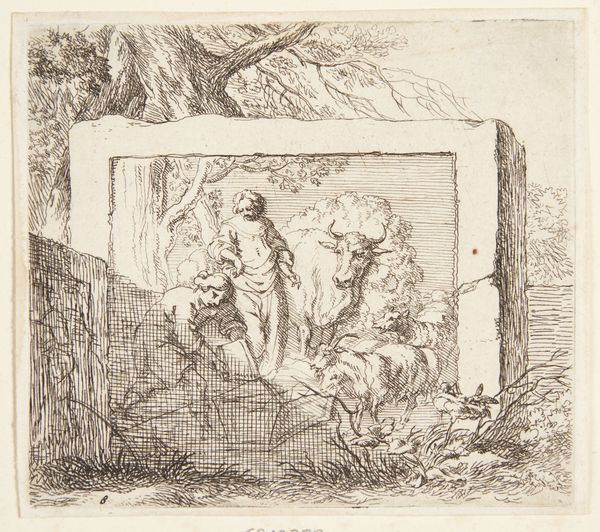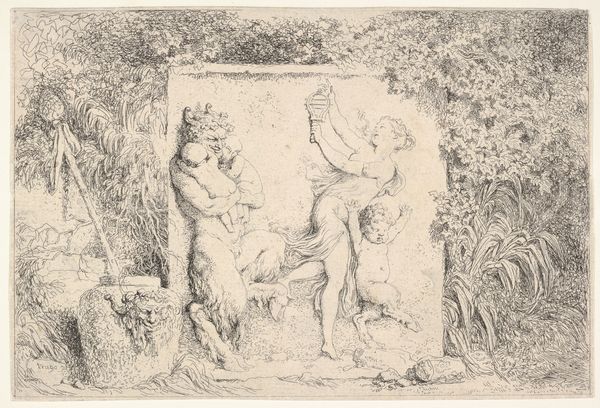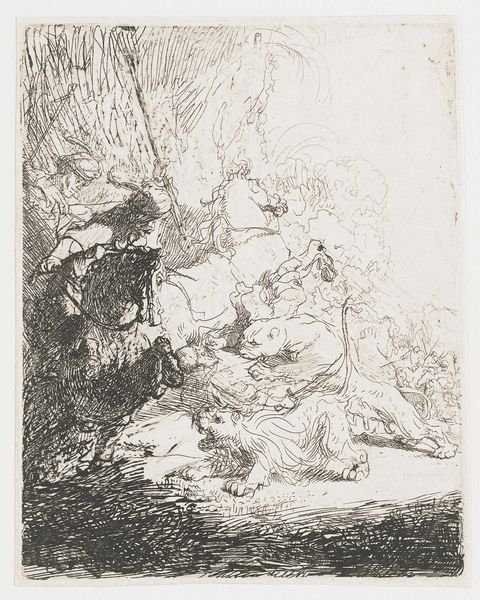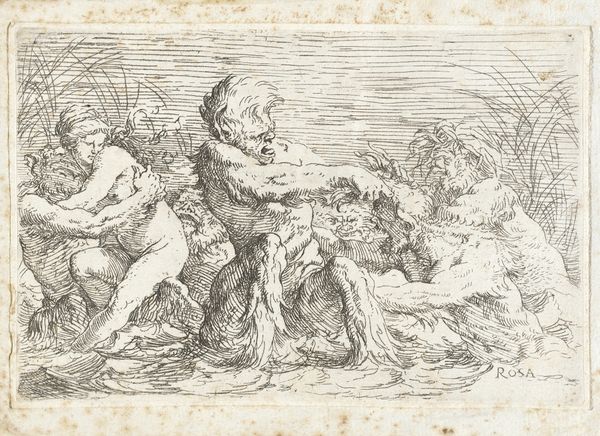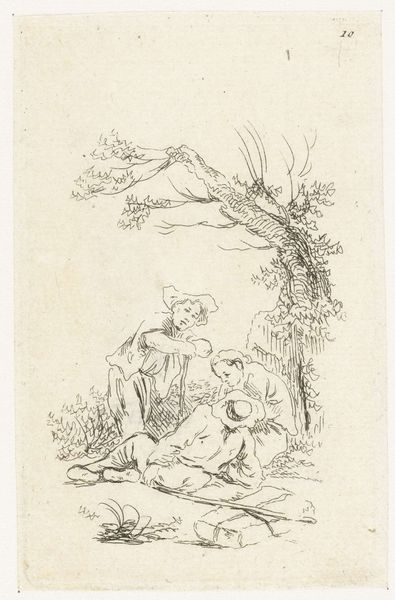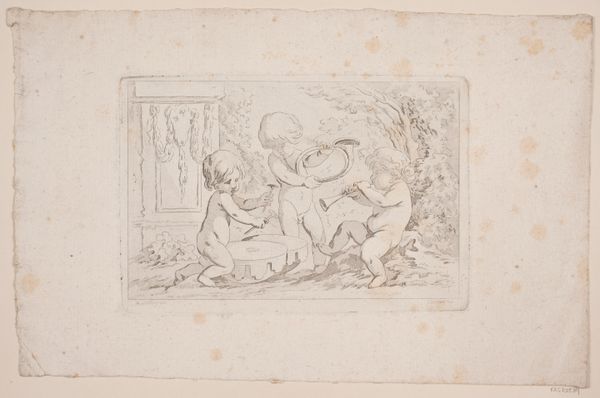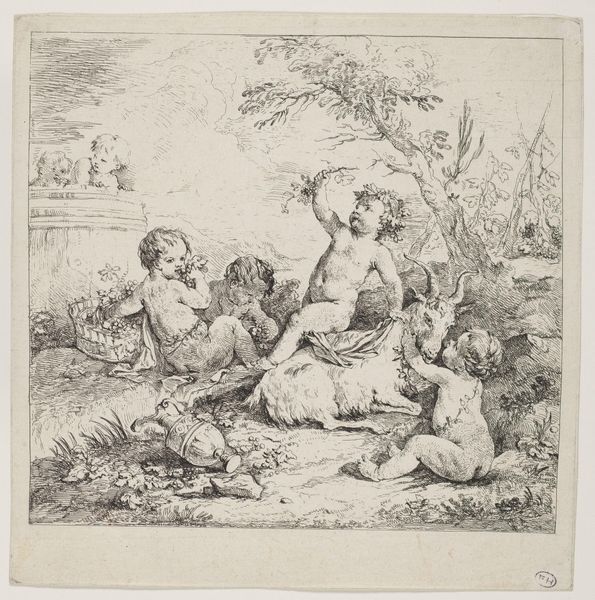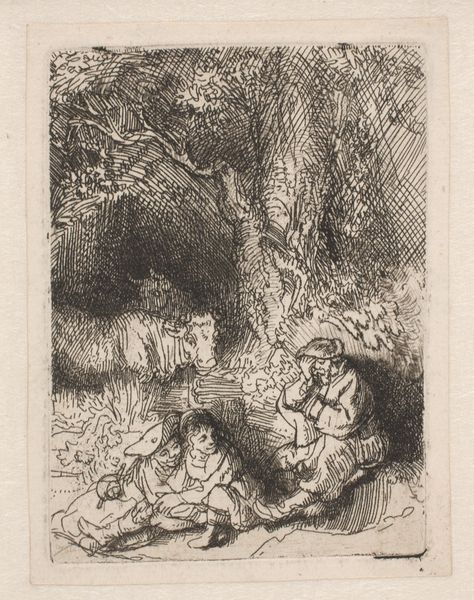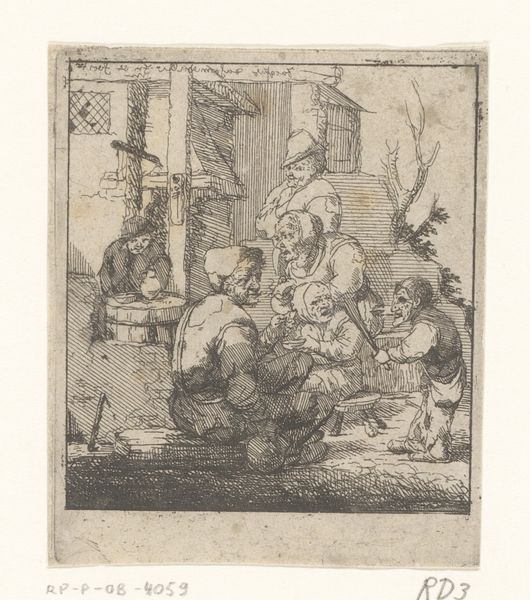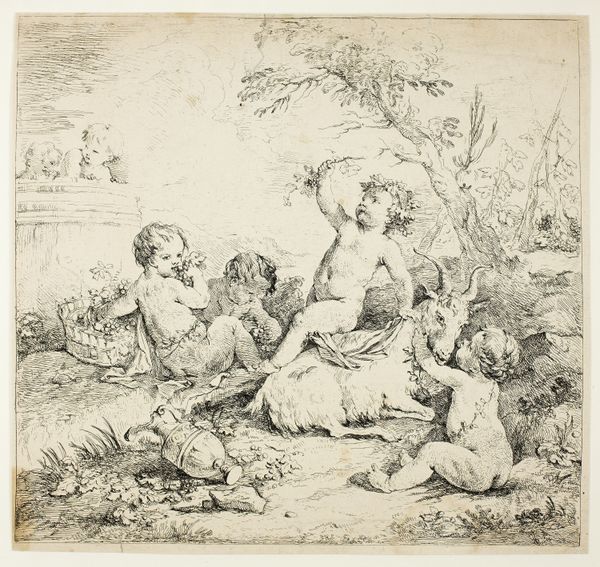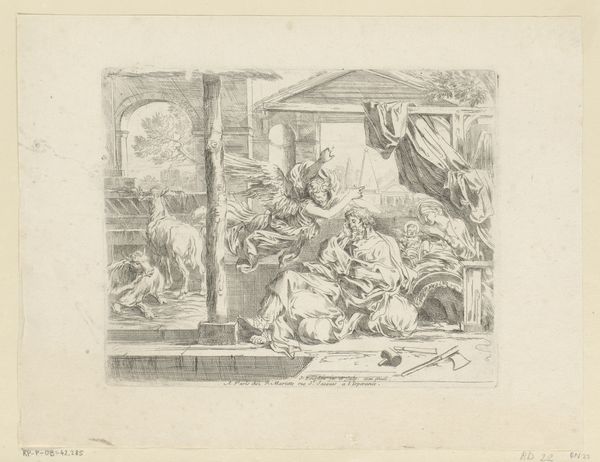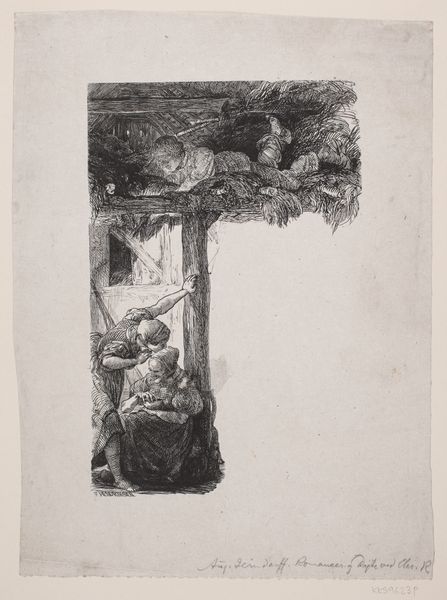
Stenblok med et basrelief forestillende en hyrde, der hælder vand i et trug 1620 - 1683
0:00
0:00
print, etching
#
baroque
# print
#
etching
#
landscape
#
etching
#
figuration
#
genre-painting
Dimensions: 99 mm (height) x 111 mm (width) (plademaal)
Curator: Here we have Nicolaes Berchem’s etching, “Stone Block with a Bas-Relief Depicting a Shepherd Pouring Water into a Trough," created sometime between 1620 and 1683. What catches your eye first? Editor: The dreaminess of it all. It’s like a half-remembered pastoral scene playing out on weathered stone. The starkness of the etched lines against the presumed softness of the figures... it’s like glimpsing a forgotten myth. Curator: Indeed. The use of a stone block as the backdrop is particularly potent. Throughout history, the shepherd has been a pervasive symbol of care and spiritual guidance, harkening back to ancient Near Eastern traditions, and resonating powerfully in Christian iconography. Editor: Absolutely. The relief is set into the stone in an intriguing way. Is this Berchem positioning art both inside and outside of our space? I also detect some visual wit there; is it a bit humorous to use etching to picture the bas-relief? Curator: Perhaps, but look closely at the lower-left quadrant. Notice how the etching style transforms the surrounding landscape into a scene coexisting alongside the bas-relief. The rigid boundary of the block dissolves into the free-flowing natural world through Berchem’s mastery of line. Editor: And that crumbling edge on the block mirrors the organic growth at the base. He is telling a tale of continuity, or showing how stories, too, like landscapes and mythologies, can get inscribed in stone. What strikes me is the inherent transience embedded even within something so seemingly immutable. Curator: A tension central to the Baroque aesthetic, reflecting an era of grandiosity underpinned by an awareness of mortality and change. Berchem cleverly captures this duality in a deceptively simple etching. Editor: It has made me feel surprisingly wistful, even pensive. It invites contemplation not just on art but on our fleeting existence—the very idea of "carving" permanence into an inevitably decaying world. Thank you for sharing your insights on this deceptively subtle creation.
Comments
No comments
Be the first to comment and join the conversation on the ultimate creative platform.
